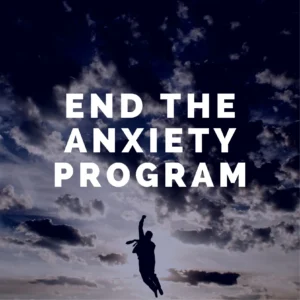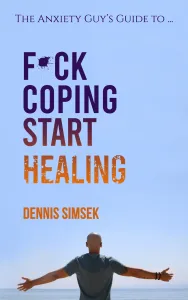Welcome I’m Dennis, and these are ten simple, daily habits I use and teach to quiet health anxiety for good. This post is the audio talk turned into words: practical steps you can start using today. I’m keeping it in the first person because this is how I talk about recovery, honest, gentle, and clear. These habits aren’t quick fixes. They’re ways of living that, over time, run deeper than a surface solution.
Table of Contents
- Habit 1, Ten slow nasal breaths before my phone
- Habit 2 – Thirty seconds of hand-on-chest connection
- Habit 3 – Gentle movement: walk, stretch, or mobility
- Habit 4 – Water before caffeine
- Habit 5 – From "what if" to "even if"
- Habit 6 – Replace Googling symptoms with interest-driven apps
- Habit 7 – Pause for 10 seconds: choose your response
- Habit 8 – Journal bodily sensations and what they might mean
- Habit 9 – Dim lights, quiet evening, breathe into rest
- Habit 10 – Be okay with imperfection

Why repetition matters: these daily practices run deeper
When you’re healing, you don’t always need new techniques. You need steady reminders and small acts repeated often. Habit becomes safety. Habit becomes the new normal. If you practice these regularly, they begin to change how your nervous system reads the world, and that change runs deeper than any one isolated exercise.
My morning primer: start the day safe
I begin my day with a few small rituals that tell my body it’s OK to be awake.
Habit 1, Ten slow nasal breaths before my phone
Before checking messages, I sit up, place both feet on the floor, and take ten low, slow breaths in and out through my nose. Often I make the exhale a little longer, like blowing through a straw. This signals safety to my nervous system and reduces the frantic tone that scrolling can trigger. This practice runs deeper than a quick calming trick, it sets a baseline for the whole day.
Habit 2 – Thirty seconds of hand-on-chest connection
After breathing, I rest a hand on my chest for about thirty seconds. That touch creates a soft signal to my inner protector: I’m here, I see you, we’re safe. Touch releases oxytocin and quietly reminds my lower self that connection beats alarm. Over time that message replaces some of the automatic “protect at all costs” responses.
Habit 3 – Gentle movement: walk, stretch, or mobility
I move my body gently each morning, a short walk, a few stretches, simple mobility. It’s not about burning calories; it’s about releasing stored adrenaline and showing my nervous system that movement is safe. Doing this daily helps me feel physically and mentally more available. Habit builds trust: the body learns movement is not a threat.
Small physical swaps that change sensations
A few tiny changes in how I fuel and respond to my body cut down symptoms that feel scary but are avoidable.
Habit 4 – Water before caffeine
I drink a glass of water before my coffee. Dehydration can mimic anxiety, and the contrast of caffeine on an empty, dehydrated system can spike sensations. Hydrating first reduces that jump and makes morning sensations calmer. Little choices like this run deeper when they’re consistent.
Habit 5 – From “what if” to “even if”
When my mind asks, “What if I’m sick?” I answer with: “Even if this stays, I can still live today.” That language adds flexibility to a rigid thought pattern. I’m not denying sensations; I’m giving myself permission to act in the presence of them. It’s a shift from fear to workable reality.
Replacing unhelpful habits with helpful ones
Your instinct might be to gather more information. I learned some replacements that change the loop.
Habit 6 – Replace Googling symptoms with interest-driven apps
When the urge to Google hits, I open an app that interests me, history, art, a brief lesson, something that engages curiosity without feeding the alarm. Information is not the same as regulation. Choosing different input helps my brain learn new patterns and reduces compulsive checking.
Habit 7 – Pause for 10 seconds: choose your response
When a symptom rises I pause for ten seconds. I breathe low and slow and choose how to respond instead of reacting. That pause gives me access to options I don’t have when I’m panicked. Responding from calm is how I practice freedom from automatic fear.
Learning from the sensations instead of chasing them away
Symptoms often carry messages. I work with them rather than fight them.
Habit 8 – Journal bodily sensations and what they might mean
I carry a small notepad and jot down sensations: where they appear, what I was thinking or doing, what might be underneath. This turns panic into curiosity. Not every sensation is danger, sometimes it’s overwhelm, fatigue, or old emotional weight. Making these connections helps me move from judgment to inquiry, and that shift runs deeper than simply trying to force symptoms away.
Evening habits that teach rest
How you end your day teaches your body whether night is for repair or for worry.
Habit 9 – Dim lights, quiet evening, breathe into rest
I dim the lights, turn off screens earlier, and slow my breathing as night approaches. Night is for rest, not research. When I make evenings calm and unhurried, my body learns that nighttime means safety. This habit protects sleep and lowers the background noise that fuels anxiety.
Habit 10 – Be okay with imperfection
I accept that recovery is messy. My symptoms may still show up. Life won’t be perfectly smooth. Choosing to live fully despite imperfection is how I step out of control-based thinking. Letting go of the need to fix everything instantly is one of the most freeing practices I’ve adopted.
Five ways I make these daily routines stick
- Start small, pick one habit and practice it every day for a week.
- Anchor new habits to existing routines, breath before coffee, journal after lunch.
- Keep a tiny tracker, checkmarks build momentum.
- Use reminders that don’t provoke stress, a gentle alarm or a note on the mirror.
- Be kind to yourself when you miss a day, recovery runs deeper when it is compassionate.
How to turn these 10 Daily Habits into a lifestyle
Change happens by repetition. I encourage you to treat these as lifestyle choices, not quick hacks. The more you do them, the more your nervous system re-learns safety. When you practice steadily, the relief becomes sustainable.
A simple plan to get started
Pick two habits for this week (I suggest the morning breathing and the 10-second pause). Practice them every day. Next week add another two. Small, steady steps create a long-term shift. Over months you’ll notice your reactivity softening, your curiosity returning, and your life opening more fully.
Final note – you are more than anxiety
I believe your body and mind want to heal. These habits are tools I use to befriend my nervous system and reclaim my day. If you want deeper, daily guidance, my program at anxietyguyprograms.com walks you through day-by-day practices to retrain thoughts, sensations, and habits. Healing runs deeper when it’s steady, guided, and kind.
If this resonated, leave a comment below, tell me which habit you’ll try first, and come back to this page whenever you need a reminder. I’m proud of you for doing the work. I’ll see you next time.




